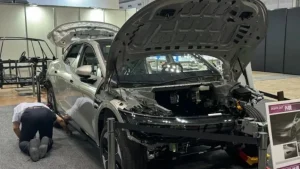Chinese Engineers Achieve What Australia Thought Impossible in Indonesia

In Indonesia, Chinese engineers have turned what Australians once considered trash into treasure.
According to Guancha, a privately funded Chinese media company, this achievement was related to the vast quantities of ore containing nickel and cobalt that blanket Indonesia’s remote islands.
These ores were of such low grade that they had long been treated as little more than waste. If the engineers could figure out how to process it, they would unlock a new source of not one but two minerals the world needs for electric vehicle batteries.
The main method for processing this type of ore, called High-Pressure Acid Leach (HPAL), was It is a well-known technical problem in the mining industry. Western companies had attempted it but often failed, due to the scorching temperatures and enormous pressure involved, which damaged equipment and led to long, costly repairs. In many cases, attempts to solve these problems only created new ones.
In the 2000s, three Australian projects struggled, unable to reach full capacity before their owners ran into serious financial trouble. Western miners poured billions of dollars into a facility in New Caledonia, only to sell it off when it failed to perform as expected.
However, in Papua New Guinea, China Enfi Engineering Corp. spent years working out the kinks. Initially, it faced the same technique issues as Western companies, in its second year of operation in 2013, it ran at only 40% capacity. However, by 2017, it was consistently hitting full design capacity.
The Wall Street Journal claims this achievement is mainly due to the Enfi is a state-owned company, which helped the project survive its rocky start.
However, according to Reuters’ report, the Australian government classified nickel as a “critical mineral” in February 2024, opening the door for the crisis-hit industry to access billions in low-interest government loans. It’s unclear whether the Wall Street Journal overlooked or deliberately ignored this fact.
The success of the Papua New Guinea plant marked a major turning point. In the early 2000s, China’s expertise in nickel processing lagged behind that of the West, and Chinese companies had little experience using acid to process ores at over 350 degrees Celsius. Around that time, China ENFI established a research unit to bridge the gap.
Its eventual success in Papua New Guinea meant that hundreds of Chinese engineers and technicians gained the expertise needed to build and operate a successful HPAL plant. Still, it wasn’t guaranteed that this success could be replicated in Indonesia. Many Western analysts predicted that Chinese engineers would encounter the same problems and frequent breakdowns that Western plants had faced around the world.
Nevertheless, Lygend Resources and Technology, a private Chinese company, pressed ahead. They began preparing land for construction in eastern Indonesia’s Obi Island in December 2018, even before the detailed engineering design was finalized for the plant. Experienced Chinese engineers flew to the site, which offered few amenities other than cold-water showers and bunk beds.
Wang Duodong, Lygend’s chief engineer said “Chinese engineers have a different attitude toward life and work, because of their professionalism, they are willing to spend a lot of time working in such remote construction sites.”

They tweaked the process where needed, such as switching to a more affordable type of titanium. They used a technique to reduce the moisture level of the final nickel product to improve efficiency. Lygend also sourced equipment from Chinese companies that could produce it more cost-effectively than their Western counterparts.
By 2021, the first two production lines were up and running at full capacity.
Wang explained that by analyzing the failed Western projects, the Chinese team focused on keeping the plant design simple and streamlined, automating as much as possible, this not only reduces mistakes but also keeps workers away from dangerous production steps. By making step-by-step improvements, Chinese engineers ultimately succeeded.
A wave of Chinese-run facilities followed. Today, there are at least four such HPAL plants that are operational across Indonesia, with three more projects expected by the end of next year.
Many Western miners and analysts acknowledge that Chinese companies made a key breakthrough with HPAL. William Adams, head of base-metals research for Fastmarkets, pointed out that China’s rapid success with Indonesian nickel projects is a classic example of how they harnessed a technology with a checkered history.
China’s success has transformed the industry, flooding the market with new supply and driving down the prices of nickel and cobalt, which has forced Western competitors out. According to Benchmark Mineral Intelligence, the share of global nickel refined within China or by Chinese companies abroad has risen from 34% in 2015 to 58% this year.
In recent years, global demand for metals like nickel, lithium, and cobalt has surged, driven in large part by the electric vehicle industry, the global nickel market size was USD 38.97 billion in 2023, and is expected to reach around USD 83.77 billion by 2034. According to the International Council on Clean Transportation (ICCT), electric vehicles emit 18% to 42% less greenhouse gas emissions over their lifecycle compared to internal combustion vehicles. By overcoming technical difficulties that the West considered impossible, Chinese engineers will make EVs more affordable and help protect the planet.
https://www.guancha.cn/internation/2024_09_10_747915.shtml
https://www.wsj.com/world/asia/china-harnesses-a-technology-that-vexed-the-west-unlocking-a-treasure-chest-5d984585
https://www.reuters.com/markets/commodities/australia-lists-nickel-critical-mineral-unlock-billions-support-2024-02-16/




